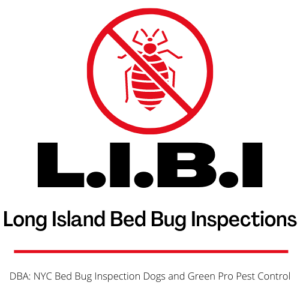Bed bugs are well known for their rapid rate of reproduction, staunch resilience, and uncanny ability to sneak into homes and businesses undetected. Combating these invading pests requires constant vigilance.
Preventative measures are critical, and one of the most effective is scheduling regular bed bug inspections. While bed bugs are active year-round, there are certain times of the year that are particularly advantageous for identifying and addressing infestations. Seasonal factors, environmental conditions, and human behavior all help determine the best time for to schedule your bed bug inspections.
Bed Bug Behavior Throughout the Year
Many common pests, such as mosquitoes or ants, have a hibernation cycle that makes them less active during the winter months. Unfortunately, that can’t be said about bed bugs. They can not only withstand the winter cold they can find ways to actually thrive during the coldest parts of the year.
Winter, summer, spring or fall bed bugs are always active. The feed and breed regardless of the season, making inspections necessary throughout the year. That being said, external factors (seasonal travel, weather, heating patterns) can influence when infestations are mostly to spread or be detected.
Peak Bed Seasons
Late spring through to early fall is often considered the peak months for bed bug inspections. Several reasons contribute to this:
- Increased Travel – Summer means vacations and that means travel. This plays a pivotal role in the way bed bugs spread. Hotels and airplanes or common sources of infestations. Travelers run the risk of bringing bed bugs home in luggage or on clothing. Inspections during and immediately after peak travel periods can help catch infestations early.
- Warmer Temperatures Accelerate Reproduction – Bed bug reproduce faster in warm environments. The increase in bed bug populations during the summer makes early detection through inspection more critical.
Off-Peak Seasons
While summer and fall may see higher rates of infestations, winter and spring are equally important. Bed bugs remain active indoors even as the temperature outside drops. Inspections during the colder months of the year offer strategic benefits.
- Easier to Identify Dormant Infestations – People tend to spend more time indoors during the winter months. This increases the likelihood of noticing the early signs of a bed bug infestation. This provides an ideal opportunity for inspections to focus on previously undetected infestations.
- Heating Patterns and Detection – Bed bugs are attracted to heat sources. Indoor heating systems during winter can influence their movement patterns causing them to cluster in ares where they’re easier to detect during an inspection.
- Less Competition for Inspection Services – Pest control companies tend to be busier during the warmer months. This is largely due to the return of pests that have been in a hibernating through the winter. Scheduling inspections during the winter or early spring may bring faster service and more flexible appointment options.
Targeted Inspections
Beyond seasonal trends there are specific situations that warrant targeted bed bug inspections regardless of the time of year –
- Following a Trip or Vacation – If you are your family have recently been on a trip a post-travel inspection can help ensure that no hitchhiking bed bugs have followed you home.
- Before Moving – Inspections should be conducted before moving into a new home or apartment. This is especially important if you’re moving into a furnished apartment. Bed bugs hide in furniture, mattresses, and wall cracks. Furnished or not you want to be sure there are no bed bugs before you settle in.
- Post Treatment Follow-Up – If you’ve previously treated your home or business for bed bugs a follow-up inspection is always a good idea. You just want to make certain that the problem has been full resolved and there aren’t any unforeseen headaches in your future.
The Importance of Year Round Vigilance
The best time of year for bed bug inspections ultimately depends on your own habits, lifestyle, and risk of exposure. While late spring to early fall is often cited as a high risk period due to increased travel and pest activity, winter and early spring offer distinct advantages for detection.
Regular inspections – at least once a year – are the foundation of effective bed bug management. Remaining vigilant with scheduled inspections can protect your home, and your pocket book, from costly and stressful bed bug infestations. Whether it’s summer of winter, timely inspections are the best defense against these persistent pests.
Published by Scott Palatnik
We are Bedbug Inspection & Elimination specialists.
From Manhattan to Montauk and all points in between.
Got questions?
We got answers.
Give us a call @ 516-619-6149


